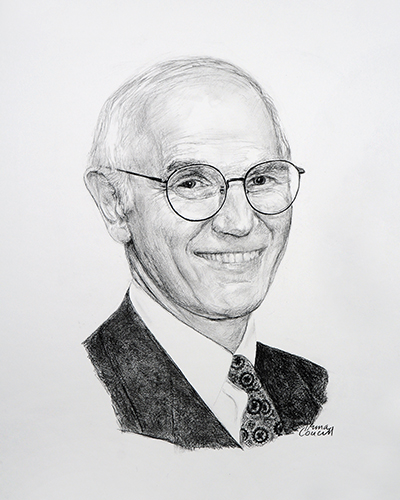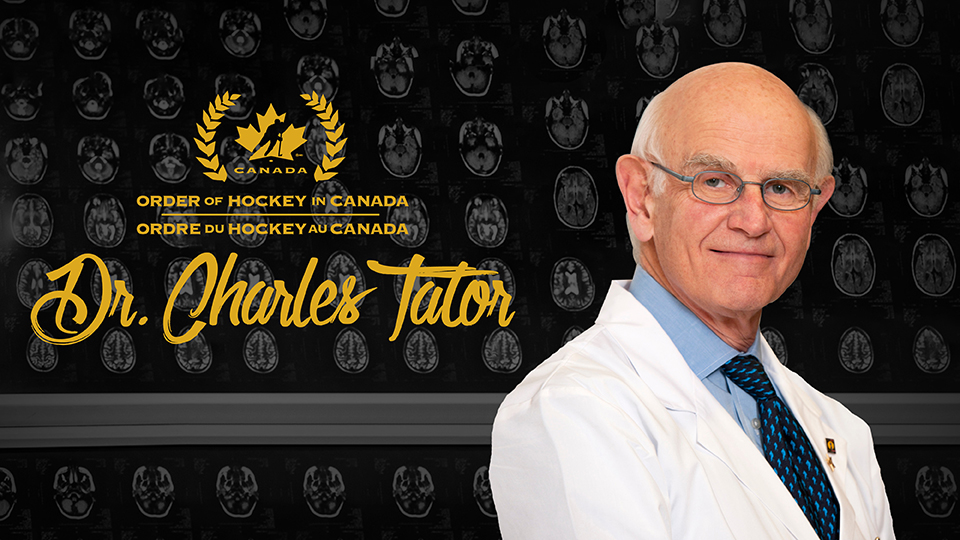2009 INDUCTEE Charles Tator, MD PhD Public Health, Health Promotion & Advocacy, Health and Medical Education & Training, Brain & Mind
August 24, 1936
(Toronto, Ontario)
MD, University of Toronto (1961)
PhD, University of Toronto (1965)
2020: Order of Hockey in Canada
2017: Laureate of the Canadian Sports Hall of Fame
See All AwardsAwards & Honours:
2020: Order of Hockey in Canada
2017: Laureate of the Canadian Sports Hall of Fame
2017: Officer of the Order of Canada
2003: Lifetime Achievement Award, Canadian Spine Society
2003: Laureate of the Terry Fox Hall of Fame
2002: Grass Prize for Research, Society of Neurological Surgeons
2000: Member of the Order of Canada
1985: Neurosurgeon of the Year Award, University of Toronto
1972: Fellow of the Amercian College of Surgeons
1969: Fellow of the Royal College of Surgeons of Canada

Transformed medical understanding of spinal cord injury

An eminent scientist, neurosurgeon, professor and administrator
Dr. Tator’s laboratory was the first in Canada to study acute spinal cord injury from a basic science perspective. His research transformed our world’s understanding of spinal cord injury with the first experimental models of spinal cord injury in small laboratory animals. Dr. Tator was one of the first to recognize the proliferation of endogenous stem cells in the injured adult mammalian spinal cord, and to assess the therapeutic value of transplantation of adult spinal cord derived stem cells after injury. In addition, the breadth of Dr. Tator’s influence is perhaps best manifested by his work in prevention, particularly related to sports and recreation.
Key Facts
Invented the inclined plane technique of functional assessment
Introduced halo vests for treatment of spinal cord injury
His advocacy resulted in the adoption of new legislation and guidelines to prevent spinal cord injury in hockey
His efforts led to the creation of the first acute spinal cord injury unit
in Canada
Served as top advisor to the Christopher Reeves
Spinal Cord Injury Foundation
and the Rick Hanson Foundation
Became the first Canadian to be appointed Chair of the Trauma Section of the American Association of Neurological Surgeons
Professional timeline
Impact on lives today
When Dr. Tator began to study spinal cord injury from a basic science perspective, he was exploring uncharted waters. Decades later, and as a result of his pioneering inspiration, Canada has become a world leader in the field. His clinical and basic research opened the door to new treatment and rehabilitation studies for the approximate 4,500 people in Canada who experience spinal cord injuries each year. Dr. Tator, however, knows that without a cure for spinal cord injury, more work needs to be done. Therefore, his legacy can also be felt in the programs and collaborations he established and the legislation he called for to prevent spinal cord injury. More recently, Dr. Tator’s research has made important inroads in our understanding of concussion disorders. His research continues to inform and focus public discussions about concussions.

2025
-

As a world-renowned expert on sport-related concussions and spinal cord injuries, Dr. Tator was named an Order of Hockey in Canada Honouree
Brain & Mind, Public Health, Health Promotion & AdvocacyA long-time advocate for safety in Canadian minor hockey, Dr. Tator's work in combatting concussions in hockey is significant. Serving as the Director of the Canadian Sports Concussion Project at Toronto Western Hospital, his efforts to reduce spinal cord injuries suffered in hockey have been exemplary.
-
Tator published "Concussions and their consequences: current diagnosis, management and prevention"
Brain & Mind -

Charles Tator inducted into the Canadian Medical Hall of Fame
Montreal, Quebec
-
The Canadian Brain and Nerve Health Coalition was established
Public Health, Health Promotion & Advocacy, Brain & MindThe Coalition brings Canadian organizations together to promote increased research and public awareness of neurological conditions. Dr. Tator played a key role in its establishment and growth.
-
Dr. Tator held the Campeau Family Foundation Chair in Brain and Spinal Cord Research at the University of Toronto and Toronto Western Hospital
Leadership in Organizational Development, Brain & MindHe remained in this position until 2007.
-

Dr. Tator founded ThinkFirst Canada
Public Health, Health Promotion & Advocacy, Leadership in Organizational DevelopmentThis organization educates young people about safety. Dr. Tator almost single-handedly promoted the prevention concept and established chapters of this organization throughout Canada. He served as president until 2007.
-

Dr. Tator was appointed chair of the division of neurosurgery at the University of Toronto
Health and Medical Education & Training, Brain & MindDuring this time, Dr. Tator fostered the growth of Canada’s surgical scientist training program, believing that aspiring academic surgeons should train in science at the highest level. This program is admired by neurological departments across Canada.
-
Dr. Tator developed one of the first experimental models of spinal cord injury in small laboratory animals
Brain & MindThis model provided scientists with tools to understand the functioning of the brain.
-
Dr. Tator demonstrated that post-traumatic ischemia is a major second injury mechanism after experimental spinal cord injury
Brain & MindThis finding became a focus of his scientific study from 1973-2000.
-

Dr. Tator joined the Division of Neurosurgery at the Toronto Western Hospital
Leadership in Organizational Development, Brain & MindIn 1985, he became head of the division.
1970
He took care of people and worked on what mattered to people.


